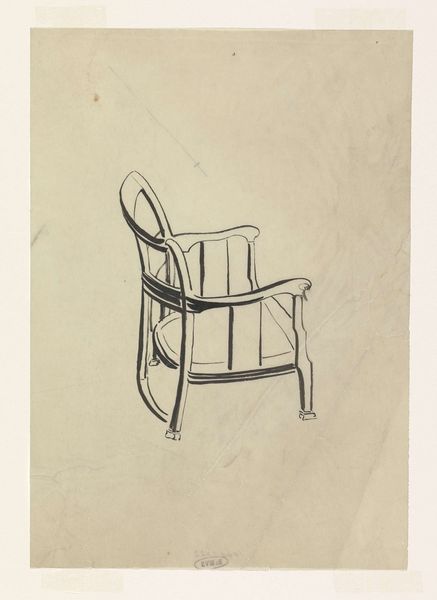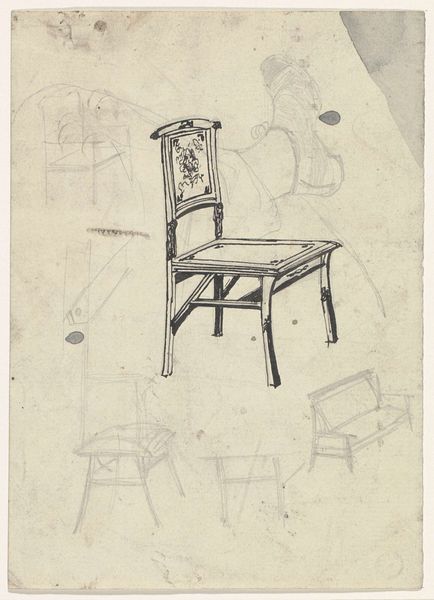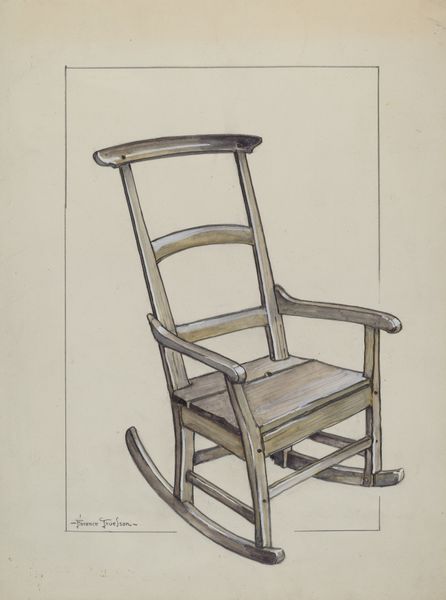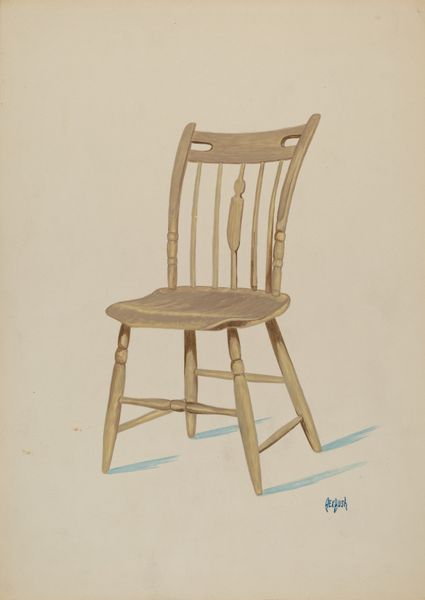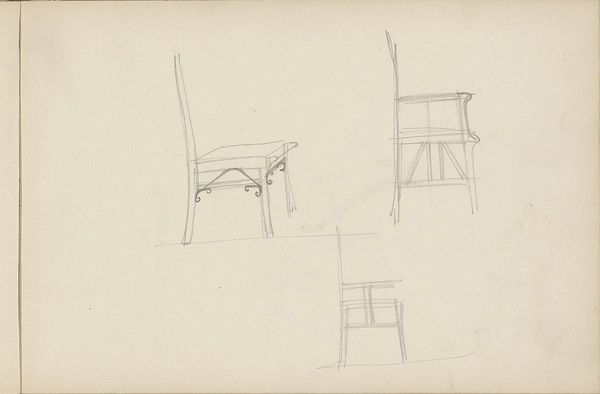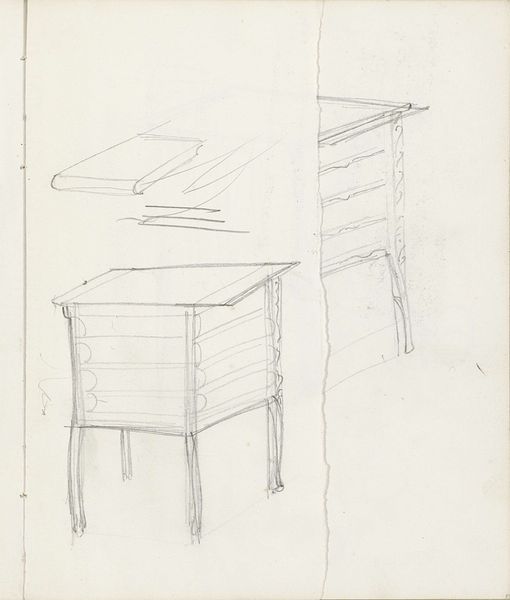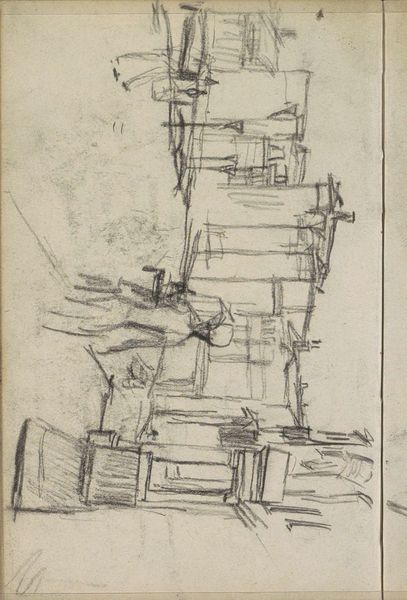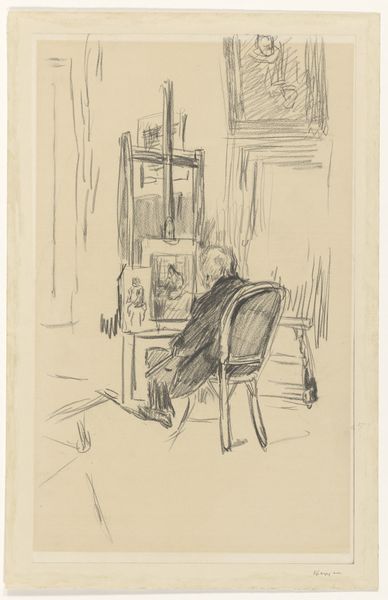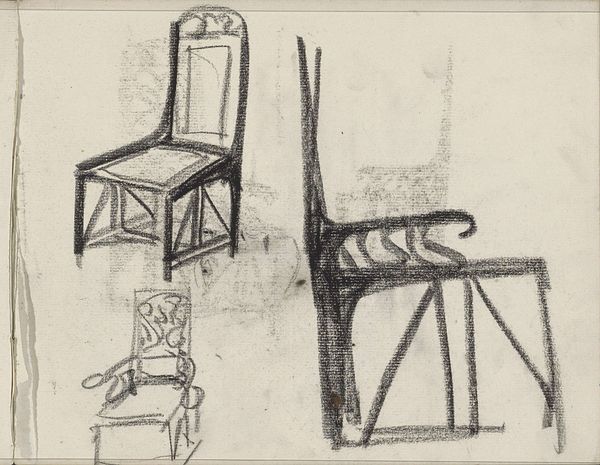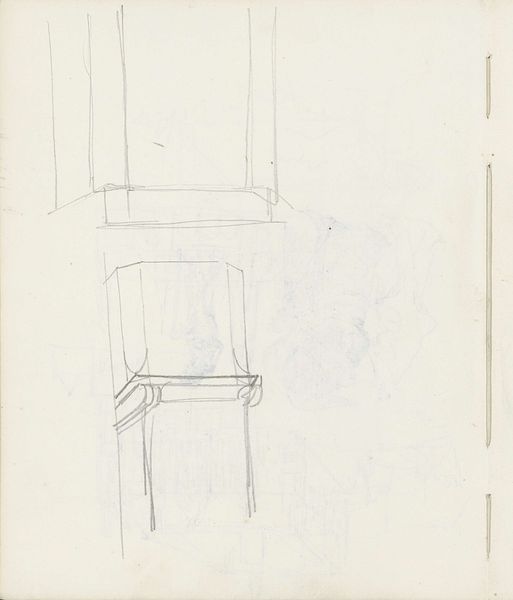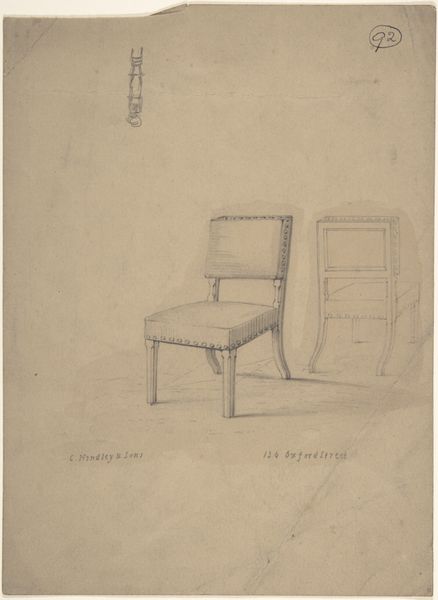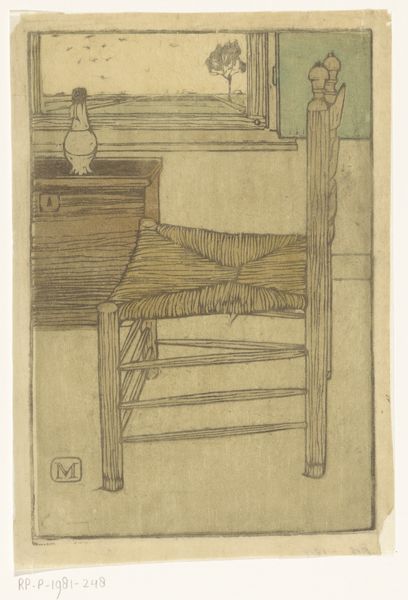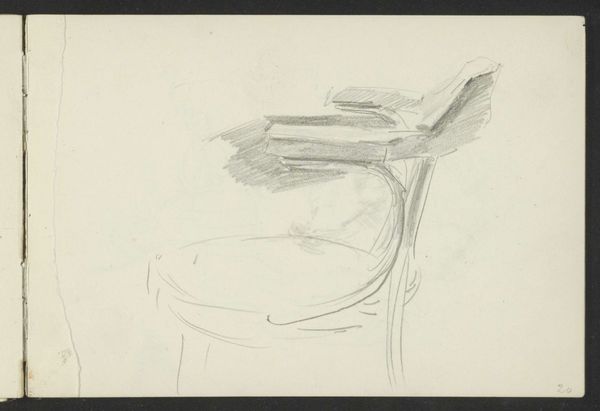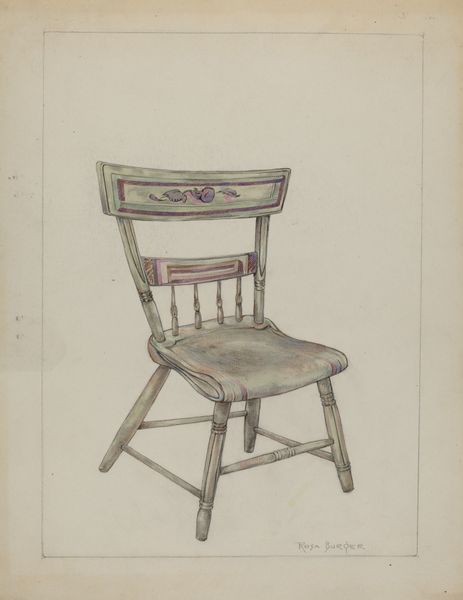
#
aged paper
#
light pencil work
#
sketch book
#
personal sketchbook
#
idea generation sketch
#
ink drawing experimentation
#
pen-ink sketch
#
sketchbook drawing
#
storyboard and sketchbook work
#
sketchbook art
Dimensions: height 103 mm, width 80 mm
Copyright: Rijks Museum: Open Domain
Editor: Here we have Carel Adolph Lion Cachet’s “Ontwerp voor een stoel,” dating somewhere between 1874 and 1945. It's a simple sketch, ink on paper, and I'm immediately struck by its sparseness. What can you tell me about it? Curator: What interests me is the institutional context. Sketches like these give us a peek into the design process, often unseen. These 'idea generation sketches' grant unique insights when found inside an artist’s ‘personal sketchbook.’ Considering Cachet's dates, and the formal style of the chair itself, we might ask: what social functions did furniture like this serve, and for whom? Editor: So, not just the chair, but *whose* chair it might have been, and the statement that makes? Curator: Exactly! We must remember the cultural associations with such an object and the intended setting. It’s no ordinary chair; it reflects social aspiration and the desire to project a particular kind of image. It’s more than just functional. Editor: I see. And knowing this was likely from a sketchbook, it feels… vulnerable somehow. Like we're not meant to be seeing it, but are, and it offers a peek into how the designer saw this functional form in the context of art and society. Curator: Precisely! These objects are so useful to contextualize socio-political aspirations through material culture. They allow art historians to uncover hidden aspects of public image. A single design becomes a social document. Editor: That's fascinating! I had never thought about furniture sketches carrying such potential meaning before. Thank you! Curator: My pleasure! Looking beyond the purely aesthetic really opens up new avenues of inquiry.
Comments
No comments
Be the first to comment and join the conversation on the ultimate creative platform.
